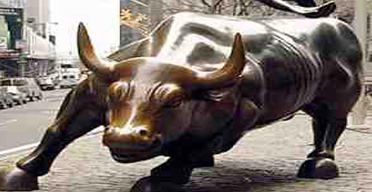PARIS, September 16 – The financial firestorm that has spread around the world from the US home loan market in the last 14 months is now widely described as the biggest crisis since the crash of 1929, but with some big differences.
Probably a "once-in-a-century type of event," in the words of former US Federal Reserve chairman Alan Greenspan, "outstripping anything I’ve seen."
For Macquarie Private Wealth associate director Marcus Droga, the collapse of Lehman brothers and other Wall Street distress dignals on Monday probably marked "more in one day of financial history than we’ve seen since the great crash of 1929."
But the head of the International Monetary Fund, Dominique Strauss-Kahn, stressed on Tuesday: "A difference with (the crisis of) 1929 is that we have instruments which don’t allow us to avoid the crisis but to soften the consequences and correct their effects."
A point made also by former World Bank economist and Nobel prize-winner Joseph Stiglitz who stresses that the crisis now should be less serious than that caused by the 1929 stock market crash in the United States, which led to the Great Depression.
"The general view is that we have instruments, monetary and fiscal policy, that we know how to prevent another great depression," he told AFP, in a reference to policies in the thirties which cut government spending, encouraged devaluations and set up protectionist barriers against trade.
Largely because of work by a British economist, John Maynard Keynes, policymakers are now quick to forestall such crises with central bank support for the banking system. If deep depression threatens, governments may now use state spending to stimulate activity, rather than cutback as taxes fall.
And the "Crash of ’29" was marked by a far greater, more violent fall on stock markets than in the last few days.
"Stock prices have reached what looks like a permanently high plateau," an influential American economist announced in mid-October 1929.
It was something that millions of people — many of them modest employees who had gone into debt to buy shares in everything from steel and railroads to dubious real-estate plots in Florida — desperately wanted to believe.
The practice of margin trading, whereby an investor had only to put up a small percentage of the cost of an asset, had allowed many people who otherwise could not have afforded it to "play the market."
The assumption was that they could repay their loans as soon as they sold their shares at a handsome profit, given that the only way the markets could go was up. This particular aspect of that crisis is similar to part of the cause of the US subprime collapse: people thought the value of their homes could only rise, offsetting the weight of their mortgage.
It was not to be. After slipping in mid-October, 1929, the Dow Jones industrial average fell sharply on Wednesday October 23, and the market went into free fall the next day, which became known as "Black Thursday."
The number of traders seeking to sell shares was so great that the ticker-tape systems which followed the market in those days before computers simply broke down.
Things seemed to improve the following day when a leading banker bravely announced that he was buying shares in steel — a statement many took to mean that things would now improve.
The next Monday, however, there were no more would-be saviours to try and talk up the market.
The index crashed by 13 percent, and on the Tuesday it was down a further 12, adding two more "black" days to the lexicon of financial disaster.
By early November the US stock market had lost 50 percent of its value in two months, and countless Americans had seen most or all of their wealth evaporate.
Over the following three years, as the Great Depression followed on from the Great Crash, total losses took the index to almost 90 below its peak.
By then however, many people had other things to worry about.
In 1933 almost a quarter of all workers in the United States were unemployed, and the situation was similar in other capitalist economies.
The depression also saw the rise of fascism in Italy and Germany, which heralded the onset of World War II.
Paradoxically, the arms spending provoked by that conflict was a major factor in ending the economic slide that had begun on "Black Thursday."
It was not until 1954, amid the reconstruction boom that followed the war, that the Dow Jones index finally returned to, and overtook, the level of mid-1929.


































